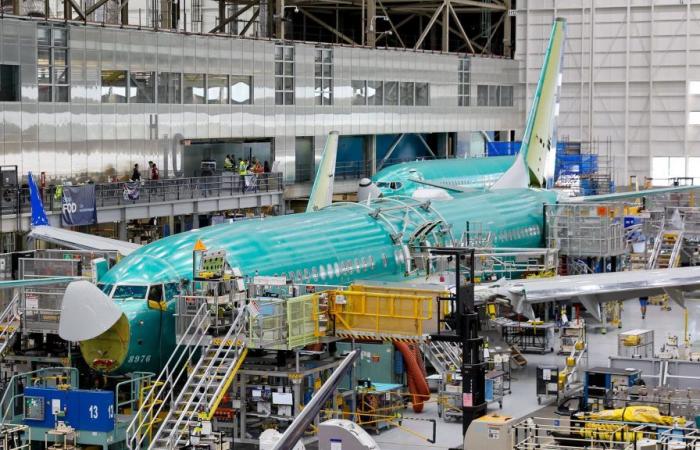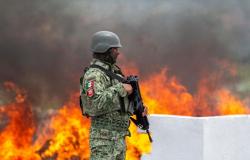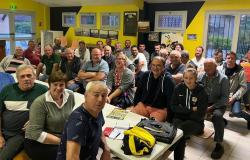Boeing has been in turmoil since the Alaska Airline flight incident in January. Under the watchful eye of the regulator, the American aircraft manufacturer is strengthening its manufacturing processes.
Extended training, mentors for new recruits, retirees returning for coaching, reinforced tracing, performance indicators or even quality inspectors at its suppliers, Boeing is working to correct the quality failures of its best-seller, the 737, produced in its factory in Renton, in the northwest of the United States.
“I have tremendous confidence that every airplane that leaves this factory is safe,” said Elizabeth Lund, Boeing’s vice president of manufacturing quality, after a presentation to reporters this week in Renton on the company’s efforts to return to flawless production.
The group has been under close scrutiny from the US aviation regulator, the FAA, since an in-flight incident in January involving an Alaska Airlines plane. Multiple audits and investigations have identified non-compliance issues and deficiencies in its manufacturing process for the 737 family, which has now capped production rates until quality returns. The regulator has also demanded a comprehensive plan to fix the situation.
Increased monitoring of subcontractors
According to Elizabeth Lund, four categories of actions have been identified to resolve these “systemic problems”: strengthening training, simplification of procedures, elimination of defects at supplier level and dissemination of quality culture.
“We are becoming stronger (…) We are already seeing the effects of all this,” she rejoices, while recognizing that it will take several years to deploy everything.
Bill Riley, a quality inspector with Boeing for 16 years, visited Spirit Aerosystems, which supplies fuselages for the 737 in particular. “I taught them what I know here, and I learned there. And you can really see the changes in the fuselages that we receive” in Renton, he explains, standing next to a fuselage that has just started its journey on the assembly line. According to him, this “face-to-face” and the sharing of experiences has been important.
Since the January incident, Boeing has deployed 150 employees to Spirit in Wichita, Kansas, which represents a “significant increase,” said Katie Ringgold, vice president and general manager of the 737 program and plant manager in Renton. The result: a “significant” 80 percent decrease in the number of defects found on fuselages being received at Boeing.
Listed parts, barcodes…
Its teams, no longer having to resolve these concerns, are also more efficient: overdue tasks have decreased by more than 50%, according to Elisabeth Lund.
This is all the more important because, for each of the ten stations on each of the three assembly lines, the factory develops a list of criteria necessary to move on to the next step. The one at station three is already ready, posted up in plain sight.
At first glance, the large hangar housing the assembly lines gives the impression of a great mess straddled by a procession of aircraft at different stages of manufacture. It should not be trusted. Every tool, every spare part – including defective ones – is listed, the tool kits have a parking area. Since the incident in January, barcode tracking has been introduced in some cases and a steward’s post has appeared at each station.
Increased training
Between 300 to 500 people work on each assembly line during each of the three shifts, in an ambient hubbub. Before joining, new recruits – mechanics and quality inspectors – must go through the Boeing Basic Training Center, located nearby.
More than 300 hours of additional training have been added since the pandemic, which led to tens of thousands of layoffs and then recruitments. It now takes four months to reach the assembly line.
Engineers also come through, although it’s not required, says Mani Tiggs, vice president of commercial aviation production and safety. In all, about 600 people a day visit the center.
“This allows them to familiarize themselves with the work environment, to continue to acquire skills,” he adds, specifying that 160 instructors have also been spread across the chain to advise employees.
A Boeing 737 Max is an assembly of more than two million components, including 40,000 rivets fixed one by one, by hand, or even four hands, and 58 kilometers of cables. And “if a piece falls to the ground, we don’t use it,” assures a trainer. “It’s going to the trash.”






